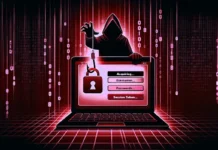Safeguarding your digital workspace has become more critical than ever in today’s digital age, given that most of your work and personal tasks are done online. Cybercriminals are keen to exploit any vulnerabilities in your system, putting your valuable data, financial information, and privacy at risk.
To help you protect your digital environment and secure your assets, here are seven practical pointers:
Implement Strong Password Management
A fundamental step in protecting your digital workspace is implementing strong password practices. Weak or reused passwords are low-hanging fruit for cybercriminals, making it easy for them to gain unauthorized access to your accounts and sensitive information.
- Use a Password Manager: A password manager is a secure digital vault that stores and generates strong, unique passwords for all your accounts. By using a password manager, you never have to remember or reuse passwords. This reduces the risk of a successful brute-force attack.
- Enable Multi-Factor Authentication (MFA): Multi-factor authentication strengthens security by asking for additional verification forms, like a one-time code sent to your phone or a biometric scan. This significantly reduces the likelihood of unauthorized access to your accounts, even if someone has your passwords.
Adopting these password management strategies can strengthen the security of your digital environment and prevent unauthorized access.
Keep Software Up-To-Date
Outdated software is a common entry point for cybercriminals due to unpatched vulnerabilities. Frequently updating your operating system, web browsers, and other software applications is crucial to ensure you have the latest security patches and features.
- Enable Automatic Updates: Most software programs offer an option to enable automatic updates, which can save you the hassle of manually checking for and installing updates. This ensures that your applications are always running the latest, most secure versions.
- Set Reminders For Manual Updates: For software that doesn’t offer automatic updates, set reminders to check for and install updates regularly. Staying on top of updates can be tedious, but it’s a small price to pay for enhanced security.
By adhering to cybersecurity best practices like keeping your software updated, you close doors that might otherwise be open to cybercriminals. This proactive approach is critical in safeguarding your digital assets against emerging threats and protecting your systems against potential security breaches.

Implement Robust Antivirus and Antimalware Protection
While keeping your software up-to-date is essential, it’s not a foolproof solution against malware and viruses. Implementing robust antivirus and antimalware protection is a critical line of defense against these threats.
- Choose Reputable Security Software: Invest in reputable antivirus and antimalware software from trusted vendors. These solutions are designed to detect and neutralize a wide range of threats, including viruses, trojans, worms, and spyware.
- Keep Definitions Updated: Ensure that your security software is constantly updated with the latest threat definitions. Many antivirus programs offer automatic updates for this purpose, but you may need to manually initiate updates occasionally.
- Conduct Regular Scans: In addition to real-time protection, schedule regular full system scans to detect and remove any lurking threats that may have slipped through the cracks.
Employing strong antivirus and antimalware protection adds a layer of security to your digital defense strategy.
Backup Your Data Regularly
No matter how robust your security measures are, there’s always a risk of data loss due to hardware failure, natural disasters, or successful cyber attacks. Regular data backups are imperative to ensure you can recover your valuable information in the event of such incidents.
- Select a Reliable Backup Solution: Consider using cloud-based backup services or external hard drives for your backup needs. Cloud-based solutions offer the convenience of off-site storage, while external hard drives provide a physical backup option.
- Implement Automated Backups: Set up automated backups to ensure your data is regularly and consistently backed up without the need for manual intervention. This can prevent data loss due to forgetfulness or procrastination.
- Test Your Backups: From time to time, test your backups to ensure they’re working correctly and that you can restore your data when needed. A backup is only as useful as its ability to recover your information.
These practices help keep your valuable information secure and recoverable, providing peace of mind amidst potential digital challenges.
Use A Virtual Private Network (VPN)
When working remotely or accessing sensitive information over public networks, using a VPN is essential for protecting your online activities from prying eyes.
- Choose a Reputable VPN Provider: Research and select a reputable VPN provider that offers robust encryption, fast connection speeds, and a strict no-logging policy to protect your privacy.
- Enable The VPN Before Accessing Sensitive Information: Make it a habit to connect to your VPN before accessing any sensitive information or conducting online transactions, even when using a private network.
- Keep Your VPN Software Up-To-Date: Like any other software, ensure your VPN software is regularly updated to address any security vulnerabilities and improve performance.
By incorporating a VPN into your cybersecurity routine, you create a safer, more secure online experience.
Implement Access Controls and Permissions
Controlling who has access to your digital workspace and limiting their permissions is crucial for preventing unauthorized access and potential data breaches.
- Manage User Accounts: Create separate user accounts for each person who needs access to your digital workspace and assign permissions based on their roles and responsibilities.
- Disable Unused Accounts: Regularly review and disable any unused or inactive user accounts to prevent them from becoming potential entry points for cybercriminals.
- Implement Least Privilege Principle: Grant users the minimum level of access and permissions required to perform their tasks effectively. This minimizes the potential damage caused by compromised accounts or inadvertent mistakes.
By diligently managing access controls and permissions, you can fortify your digital workspace against unauthorized entry and safeguard sensitive information.
Educate and Train Your Team
Your team members are often the weakest link in your cybersecurity chain. Educating and training them on best practices for identifying and mitigating cyber threats is indispensable in maintaining a secure digital workspace.
- Conduct Regular Security Awareness Training: Implement mandatory security awareness training programs to educate your employees on topics such as recognizing phishing attempts, creating strong passwords, and handling sensitive information securely.
- Encourage Reporting Of Suspicious Activities: Foster an environment where employees feel comfortable reporting any suspicious activities or potential security incidents without fear of repercussions.
- Promote a Security-Conscious Culture: Lead by example and actively promote a security-conscious culture within your organization. Encourage employees to adopt secure practices and hold everyone accountable for maintaining a secure digital workspace.
By regularly educating and empowering your team with cybersecurity knowledge and practices, you create a stronger, collective defense against digital threats.
Safeguarding Your Cyber Environment
Protecting your workspace from cyber threats is an ongoing battle, especially considering our increasingly digital environment. By implementing the essential steps outlined in this guide, you can enhance the security of your digital environment.
It’s important to note that cybersecurity is not a one-time effort but an ongoing process that requires vigilance, adaptation, and a proactive approach. By adopting these tried-and-tested measures, you can safeguard your valuable data, maintain business continuity, and minimize the risks associated with cyber threats.



































